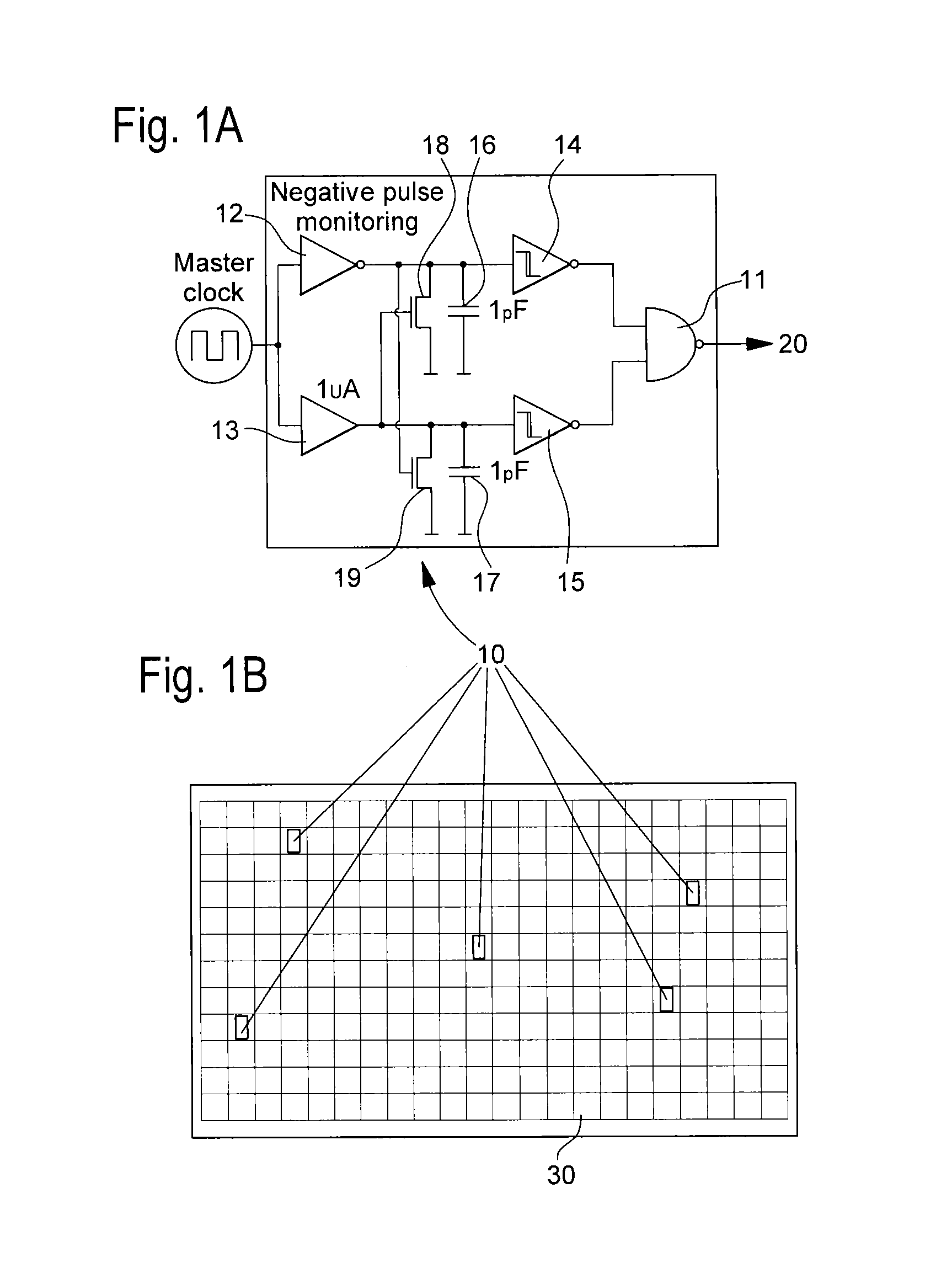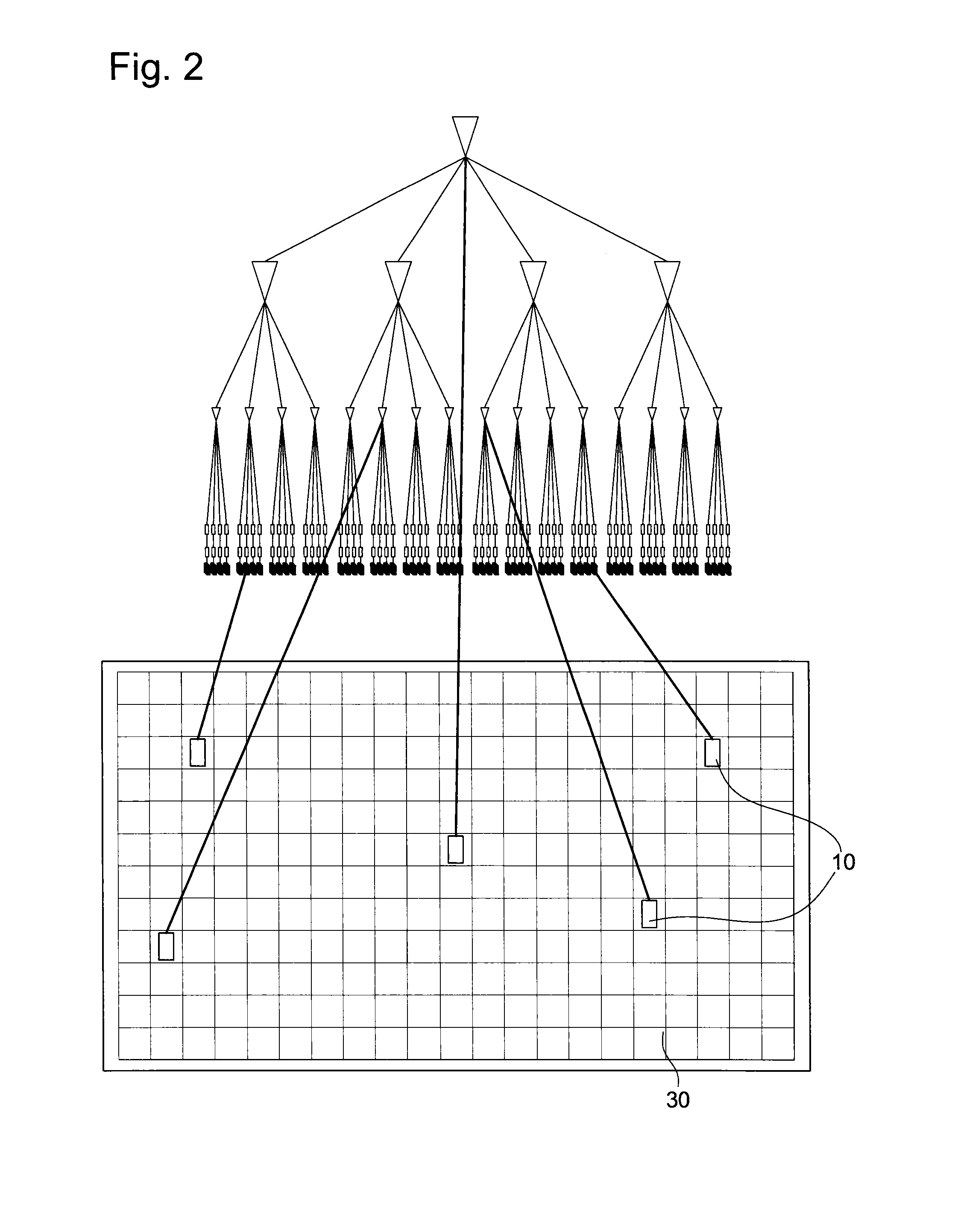Integrated circuit with distributed clock tampering detectors
a detector and integrated circuit technology, applied in the field of integrated circuits with distributed clock tampering detectors, can solve problems such as vulnerability of proposed security strategies, and achieve the effect of improving protection coverage and being immune to neutralization attempts
- Summary
- Abstract
- Description
- Claims
- Application Information
AI Technical Summary
Benefits of technology
Problems solved by technology
Method used
Image
Examples
Embodiment Construction
[0044]Reference is made to FIG. 1a which depicts a block diagram of a clock detector 10 being based on two mono-flops 12, 13 detecting under frequency conditions, for example 12 monitors clock low state duration and the other mono-flop 13 monitors one clock high state duration. In case clock low state duration is longer than the mono-flop delay of mono-flop 12—together with node full discharge transistor 18—and an alarm event is generated by Schmitt trigger 14 and propagated to output 20 through gate 11, which is for example a NAND gate. In case clock high state duration is longer than mono-flop delay of mono-flop 13—together with node full discharge transistor 19—an alarm event is generated by Schmitt trigger 15 and propagated to output 20 through gate 11.
[0045]The mono-flop delay is defined by buffer output drive capability and integrated C capacitor values 16 and 17 respectively for clock low duration state and clock high duration state. By this manner the clock detector 10 can m...
PUM
 Login to View More
Login to View More Abstract
Description
Claims
Application Information
 Login to View More
Login to View More - R&D
- Intellectual Property
- Life Sciences
- Materials
- Tech Scout
- Unparalleled Data Quality
- Higher Quality Content
- 60% Fewer Hallucinations
Browse by: Latest US Patents, China's latest patents, Technical Efficacy Thesaurus, Application Domain, Technology Topic, Popular Technical Reports.
© 2025 PatSnap. All rights reserved.Legal|Privacy policy|Modern Slavery Act Transparency Statement|Sitemap|About US| Contact US: help@patsnap.com



